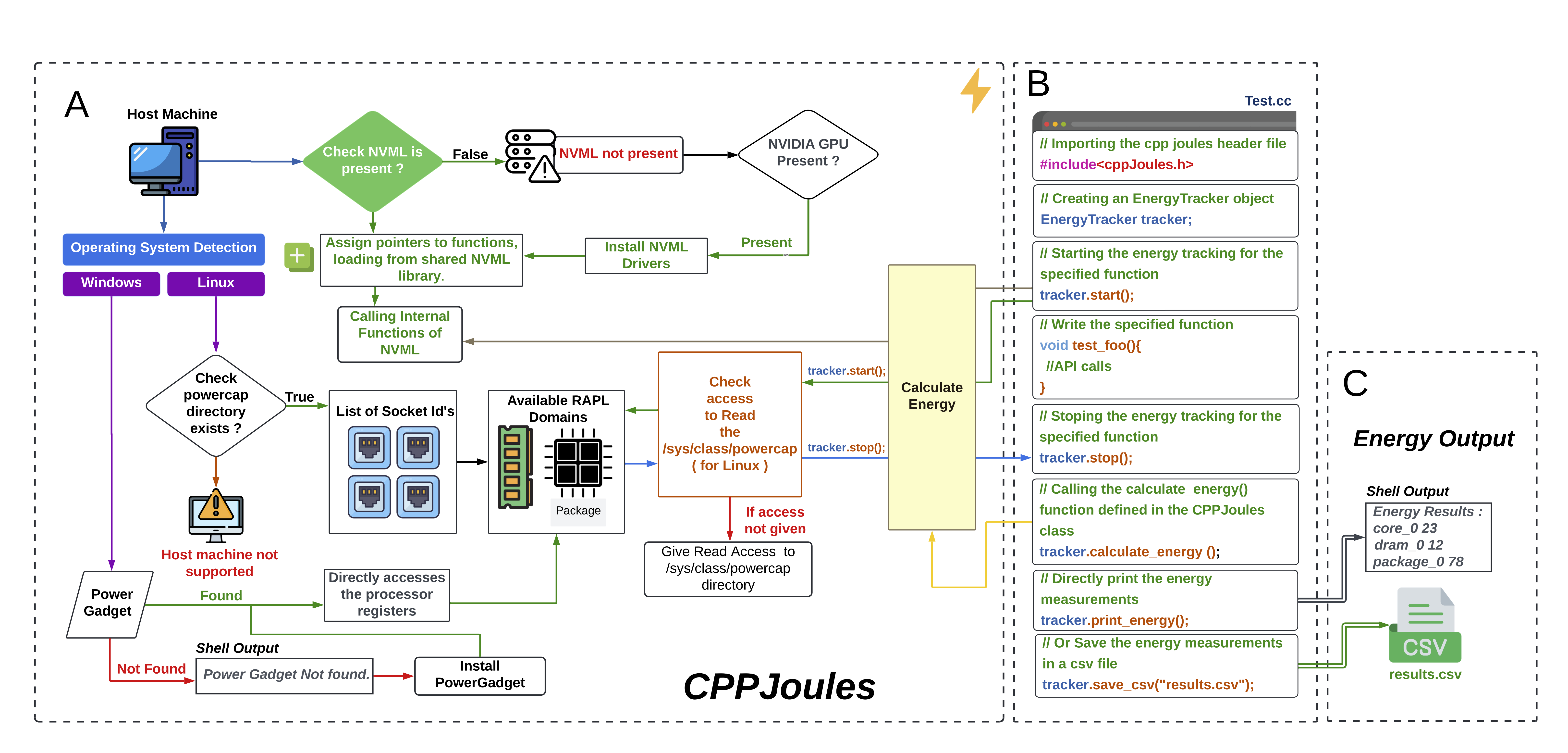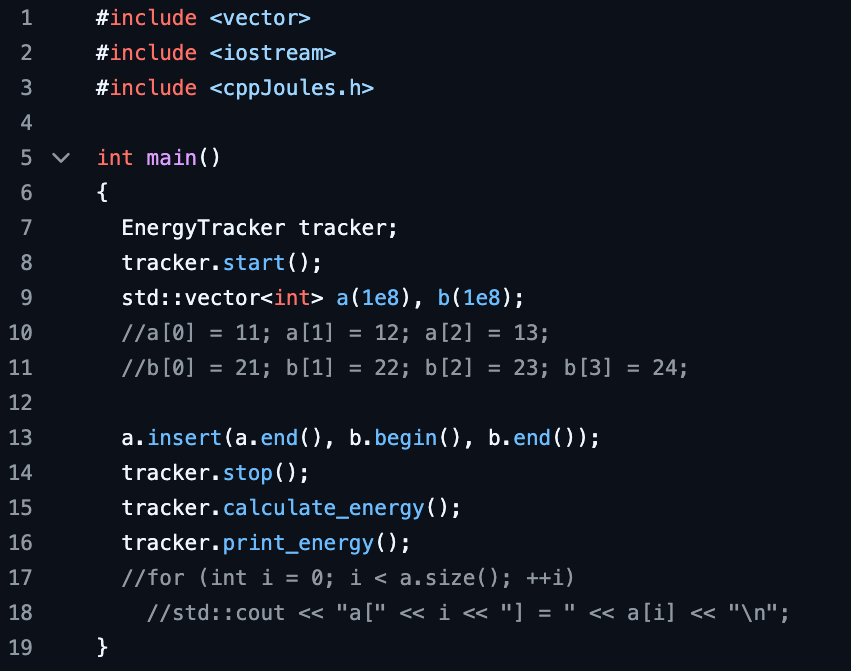Quick Start
CPPJoules - An Energy Measurement Tool for CPP
Tool Description
CPPJoules is a energy measurement tool designed to measure the energy consumption during the execution of a piece of C++ code. CPPJoules leverages the Intel Running Average Power Limit (RAPL) interface, Intel Powergadget, Nvidia Management Library (NVML) for reporting energy consumption of different system-on-chip (SoC) power domains.
Installation & Usage
Requirements
- Intel processors from the Celeron, Pentium, Core i3, i7, i9, and Xeon series, featuring the Sandy Bridge or newer architecture.
- Linux distribution Debian based operating system. We have tested on Ubuntu 20.04.6 LTS
- The g++ compiler version has to be above v11.0.0. Install from here
- If on Windows, then PowerGadget v3.6 has to installed. Click here to install
Github Repo
Our entire codebase is in this Github repo : https://github.com/rishalab/CPPJoules.git, you can either clone or download it to check it.
For installing the CPP Joules follow the below steps.
Direct Installer Link
For Linux
- Click here to download CPP Joules for Linux
- Now naviagte to the folder where the file installer.sh has been downloaded .Open that
folder in you terminal run the command :
chmod +x installer.sh
./installer.shYou will be prompted to enter your user password
- The library will be installed in /usr/bin
- Check g++ version by running this code:
g++ --version
- Now create a test.cpp file and copy the below test code :
-
Now compile the code with this code :
g++ test.cpp -lCPP_Joules
-
And run it
sudo ./a.out
-
You will get the output as :
Time 9.00326
core-0 8386636
nvidia_gpu_0 164299
package-0 66858350
uncore-0 33936
The file installer.sh will be downloaded.
If the version is less than v11.0 then run the below code :
sudo apt install g++-11
#include<cppJoules.h>
int main(){
EnergyTracker tracker;
tracker.start();
//API Call
tracker.stop();
tracker.calculate_energy();
tracker.print_energy();
return 0;
}
Or you can try with one of our test scripts from here
For Windows
- Click here to download CPP Joules for Windows
- Right click on the installer.bat file and click run as administrator.
- The folder cppJoules will be created.
- Now place this cppJoules folder in the same location where your cpp file is present.
- Example :
- Create a folder testCPPJoules and place the above cppJoules folder within it.
- Now create a test.cpp file within the folder testCPPJoules .
- Now you can directly use the header in your cpp file
- Now compile the file with this command :
g++ test.cpp -lCPP_Joules -L./cppJoules
- Then run the executable :
./a.exe
- The output
The values of DRAM-0 , GT-0 and IA-0 are in joules. The value of nvidia_gpu_0 is in microjoules.Time 9.02878
DRAM-0 0
GT-0 0
IA-0 16
Processor-0 50
nvidia_gpu_0 30633
Note : The g++ compiler version has to be above v11.0.0. Install from here
Note : If PowerGadget v3.6 is not present, then install from here
The file installer.bat will be downloaded.
#include"cppJoules/include/cppJoules.h"
#include<iostream>
int main(){
EnergyTracker tracker;
tracker.start();
//API Call
tracker.stop();
tracker.calculate();
tracker.print_energy();
return 0;
}
Or you can try with one of our test scripts from here
Approach diagram
-
Measurement of Energy
CPPJoules leverages Intel's RAPL and NVIDIA's NVML libraries to measure energy consumption for both the CPU and GPU components. For CPU energy measurement, the tool utilizes Intel's RAPL interface, which provides detailed energy traces data across various domains, including the CPU package, core, uncore, and DRAM. This is achieved through the Powercap interface on Linux and Intel Power Gadget on Windows.

Code snippet screenshot
-
Test code for array concatenation ( in linux )

-
Test code for bubble sort ( in linux )

Goal
Limitations
Results
Demo Video
Contributors
Shivadharshan S, Akilesh P, Rajrupa chattaraj, Sridhar Chimalakonda